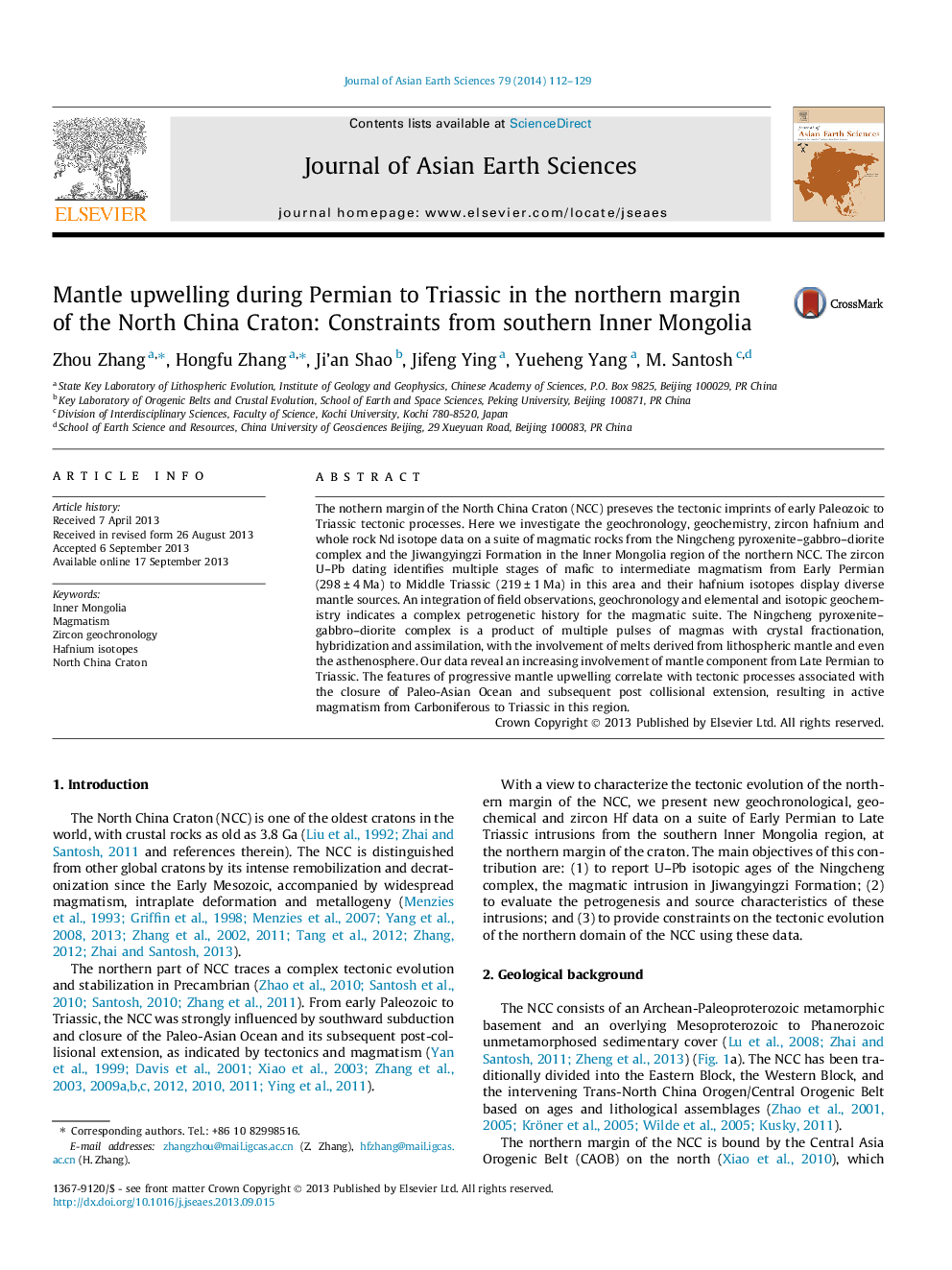| کد مقاله | کد نشریه | سال انتشار | مقاله انگلیسی | نسخه تمام متن |
|---|---|---|---|---|
| 4730895 | 1356785 | 2014 | 18 صفحه PDF | دانلود رایگان |
• Permian to Triassic zircon ages from magmatic suite.
• Hf isotopes and Nd isotopes indicate contribution from both mantle and crust.
• Multiple pulses of magma with fractionation, hybridization and assimilation.
• Time-integrated εHf(t) values indicate progressive mantle upwelling.
The nothern margin of the North China Craton (NCC) preseves the tectonic imprints of early Paleozoic to Triassic tectonic processes. Here we investigate the geochronology, geochemistry, zircon hafnium and whole rock Nd isotope data on a suite of magmatic rocks from the Ningcheng pyroxenite–gabbro–diorite complex and the Jiwangyingzi Formation in the Inner Mongolia region of the northern NCC. The zircon U–Pb dating identifies multiple stages of mafic to intermediate magmatism from Early Permian (298 ± 4 Ma) to Middle Triassic (219 ± 1 Ma) in this area and their hafnium isotopes display diverse mantle sources. An integration of field observations, geochronology and elemental and isotopic geochemistry indicates a complex petrogenetic history for the magmatic suite. The Ningcheng pyroxenite–gabbro–diorite complex is a product of multiple pulses of magmas with crystal fractionation, hybridization and assimilation, with the involvement of melts derived from lithospheric mantle and even the asthenosphere. Our data reveal an increasing involvement of mantle component from Late Permian to Triassic. The features of progressive mantle upwelling correlate with tectonic processes associated with the closure of Paleo-Asian Ocean and subsequent post collisional extension, resulting in active magmatism from Carboniferous to Triassic in this region.
Journal: Journal of Asian Earth Sciences - Volume 79, Part A, 5 January 2014, Pages 112–129
